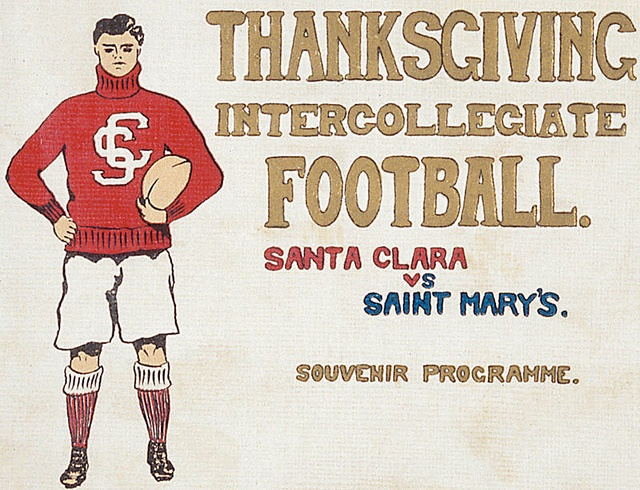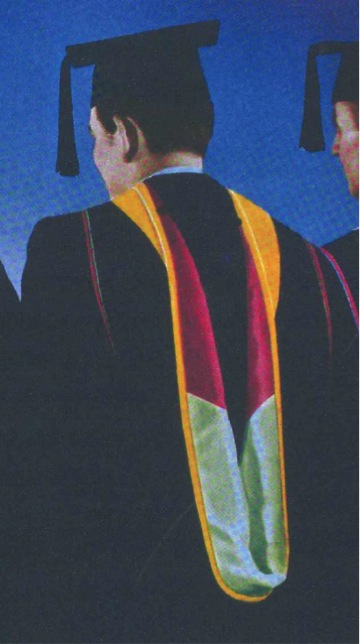Santa Clara University
California
1851



On 16 May 1895 the Intercollegiate Commission on Academic Costume approved a uniform system of caps, gowns, and hoods for American colleges and universities called the “Intercollegiate Code of Academic Costume”. The commissioners intended for every college and university to use a unique arrangement of their colors in the hood lining which would enable an observer to “read” the hood and thereby identify the alma mater of the hood’s owner. But as an article in the 27 July 1902 edition of an Albany, NY newspaper named The Argus recalled, “the combining of two or three colors in a lining was a great problem with the commission but was solved by [Intercollegiate Bureau of Academic Costume Director Gardner Cotrell Leonard] after some study in heraldry by the chevron, double and triple chevron, and parti-per-chevron.” These heraldic divisions of the school colors became the means by which a variety of distinctive hood lining patterns could be individually assigned to each school that chose to follow the Intercollegiate Code.
The chevron was by far the most common heraldic division the Intercollegiate Bureau of Academic Costume (IBAC) employed to divide the two or three colors in an institution’s hood, but beginning in 1895 the “parti per chevron” was also used quite frequently. Here the two school colors were placed in the hood lining one above the other, with the division between them following the shape of a chevron.


In 1891, a Santa Clara College student committee selected crimson and white as their school colors, probably symbolizing their devotion to the Sacred Heart of Jesus at this Jesuit college.
Citations in the World Almanac (listed by cover date; color information is from the previous year): red/white (1914-1935)

Confusingly, in IBAC lists from 1927 and 1948, a number of hoods were described as “[color] above [color]” or “[color] over [color]” which referred either to a hood lining divided per chevron, per reversed chevron, or per bar, and today it is not usually known which of these three patterns the Bureau intended to describe.
The Intercollegiate Bureau assigned Santa Clara College a hood lined “cardinal above white” no later than 1927, according to an IBAC list from that period. “Cardinal” and “crimson” were often used as synonyms by the IBAC to describe a “true red” color. Unfortunately, Santa Clara’s hood lining description was identical to the hood lining description the IBAC had also assigned to North Carolina A&E (“cardinal above white”), which implies each school used a different division of the same colors. A list compiled by Kevin Sheard in Academic Heraldry in America (1962) described Santa Clara’s hood lining as cardinal with the colors divided per chevron.